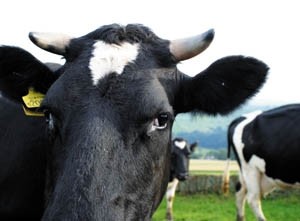Fish enzymes show potential to boost dairy flavors: Study

Digestive enzymes are used to speed up the ripening of dairy products such as cheeses, and play an important role in the development of the finished products flavor. Many such enzymes – called pregastric esterase (PGE) or pregastric lipase – are obtained from ruminants, like calves or lambs.
According to new data published in Food Chemistry, digestive enzymes from fish such as salmon and hoki may also be used to produce desirable flavor profiles in dairy products.
The enzymes from these fish may also offer technological benefits, by being able to function at considerably lower temperatures than enzymes obtained from other fish or mammals, explained researchers from McGill University and The New Zealand Institute for Plant and Food Research Limited.
Such a characteristic, suggested the researchers, “could make the enzymes suitable for applications such as the hydrolysis of milkfat, [or in other words,] release of FAs and flavor volatiles, desired in specialty cheeses and other ‘ripened’ dairy products”.
Science
Led by Susan Marshall from NZ Plant and Food Research, the researchers extracted digestive enzymes from two fish: Chinook salmon (Oncorhynchus tshawytscha) and New Zealand hoki (Macruronus novaezealandiae).
The enzymes were then incubated with cream for 24 hours. For comparison, cream was also incubated with two commercially available enzymes: Calf pregastric esterase (PGE, Renco) and microbial lipase (Palatase 20,000 L, Novozymes A/S)
Results showed that the fish enzymes produced a similar release in terms of amount and type of fatty acids in the cream. Fatty acids such as butanoic and hexanoic acids, are known as the “key dairy product flavor and odor compounds”, explained the researchers.
Indeed, the fish enzymes produced more of these key fatty acid products than any other, said the researchers.
“The odor intensity of hexanoic acid produced by the salmon lipase […] was similar to that produced by both Palatase and PGE,” they added.
“Differences in the short chain FA specificity of the two fish lipases could be used to generate distinctive flavor profiles in dairy products,” they concluded.
Source: Food Chemistry
Volume 127, Issue 4, Pages 1562-1568
“Flavour development in dairy cream using fish digestive lipases from Chinook salmon (Oncorhynchus tshawytscha) and New Zealand hoki (Macruronus novaezealandiae)”
Authors: I. Kurtovic, S.N. Marshall, M.R. Miller, X. Zhao










